The Cu Chi Tunnels and Cao Dai Temple tour promises a fascinating glimpse into Vietnam’s turbulent history and diverse spiritual traditions. Navigating the intricate underground network used during wartime, visitors can imagine the hardships endured by soldiers. At the Cao Dai Temple, the vibrant colors and ornate architecture set the stage for a captivating ceremony. But the journey doesn’t end there – the ascent to Ba Den Mountain’s summit offers breathtaking panoramic views that are sure to leave a lasting impression.
Key Points
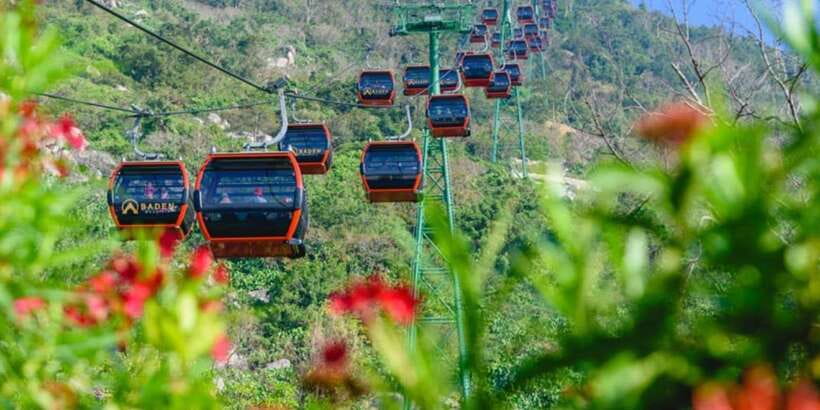
- Explore the intricate network of Cu Chi Tunnels, a strategic underground system used by Viet Cong soldiers during the Vietnam War.
- Witness the vibrant and unique Caodaist religious ceremony, blending elements of various Eastern and Western faiths.
- Enjoy a scenic cable car ride up Ba Den Mountain, offering panoramic views and the tallest bronze Buddha statue in Asia.
- The full-day tour from Ho Chi Minh City to the Cu Chi Tunnels and Cao Dai Temple costs $72.54 per person.
- The tour includes transportation, English-speaking guide, entrance fees, lunch, and the cable car ride, with free cancellation up to 24 hours in advance.
Tour Overview and Pricing
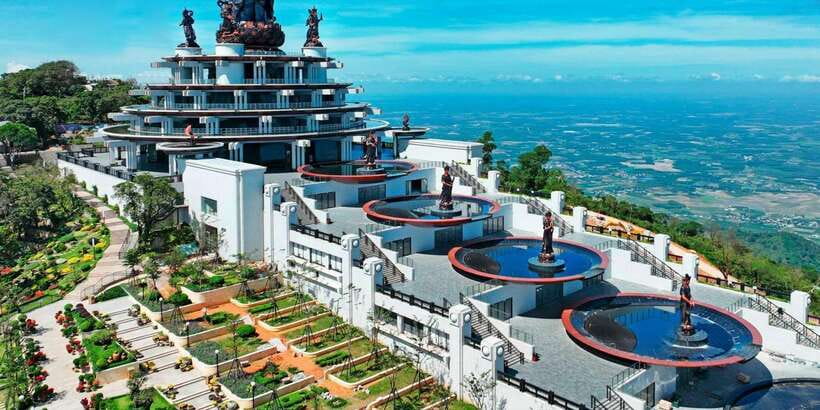
The full-day trip from Ho Chi Minh City to the Cu Chi Tunnels and Cao Dai Temple costs from $72.54 per person.
The tour lasts 1 day and is limited to small groups of no more than 15 participants. Free cancellation is available up to 24 hours in advance for a full refund. A reserve now, pay later option is also offered.
The tour includes transportation in an air-conditioned minivan, an English-speaking guide, all entrance fees, bottled water, and a traditional Vietnamese lunch.
You can also read our reviews of more tours and experiences in Ho Chi Minh City.
Exploring the Cu Chi Tunnels

Visitors to the Cu Chi Tunnels can explore this extraordinary network of underground passageways, built during the Vietnam War.
Designed to shelter Viet Cong soldiers, the tunnels offered protection, storage, and communication.
Visitors can:
-
Crawl through the narrow tunnels, experiencing the claustrophobic conditions soldiers endured.
-
See the ingenious trap doors, living quarters, and command centers that kept the Viet Cong hidden.
-
Gain insight into the tunnels’ strategic importance and the incredible hardship faced by those who fought here.
This immersive experience provides a unique perspective on the Vietnam War and the resourcefulness of the Vietnamese people.
Witnessing the Caodaist Ceremony
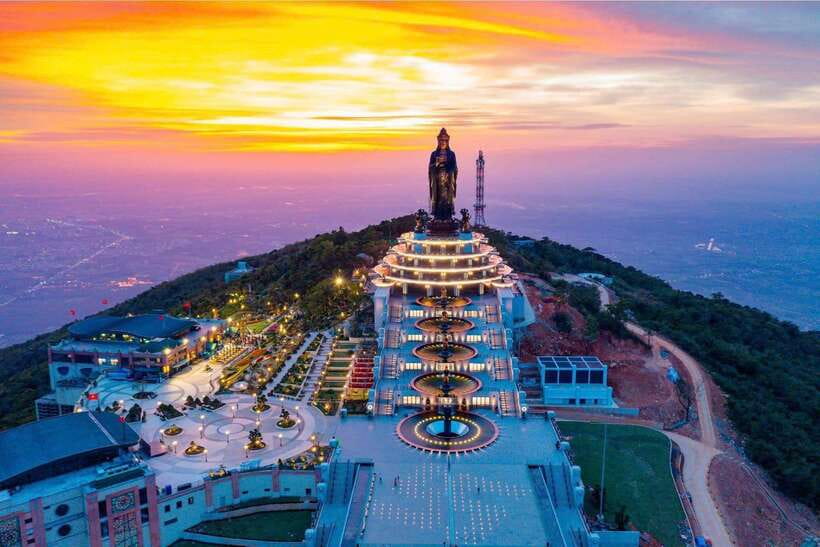
At the Cao Dai Temple, visitors witness the captivating Caodaist ceremony. They observe the worshipers dressed in colorful robes, performing intricate rituals and chanting prayers. The temple’s unique architectural design, blending Eastern and Western influences, adds to the mesmerizing atmosphere. Visitors learn about Caodaism, a religion that incorporates elements of Buddhism, Taoism, Confucianism, and Christianity.
| Caodaist Beliefs | Caodaist Practices | Caodaist Symbols |
| — | — | — |
| Monotheistic with a Supreme Being | Meditative practices | The Left Eye of God |
| Tolerance and harmony among religions | Ancestor veneration | Unique architectural style |
| Emphasis on moral and ethical conduct | Ceremonial robes and rituals | Combination of Eastern and Western influences |
The Cao Dai Temple visit provides a fascinating glimpse into this unique and vibrant religious tradition.
The Journey to Ba Den Mountain
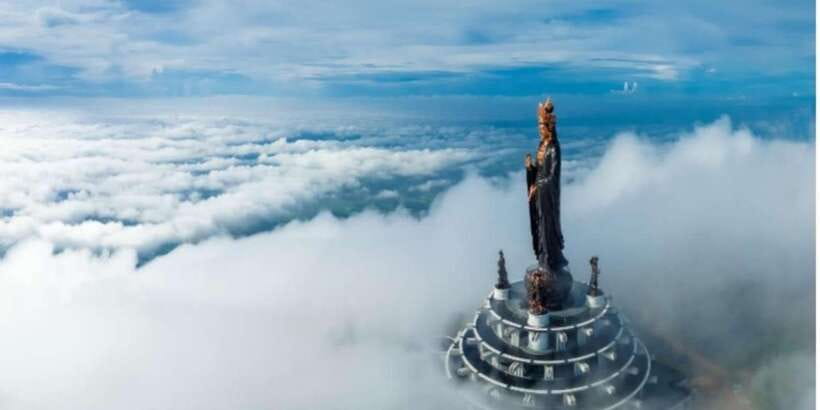
After exploring the captivating Cao Dai Temple, the tour now ventures to Ba Den Mountain.
The scenic cable car ride offers breathtaking views of the surrounding landscape. At the summit, visitors can marvel at the tallest bronze Buddha statue in Asia and enjoy panoramic vistas.
The scenic cable car ride offers breathtaking views of the surrounding landscape. At the summit, visitors can marvel at the tallest bronze Buddha statue in Asia and enjoy panoramic vistas.
-
Ba Den Mountain, the highest peak in southern Vietnam, provides a unique opportunity to experience the country’s natural beauty.
-
The cable car journey allows travelers to take in the stunning scenery without the physical exertion of hiking.
-
Visitors can savor the tranquility and spiritual ambiance atop the mountain, complementing the earlier exploration of the Cao Dai Temple.
Cable Car Ride and Panoramic Views
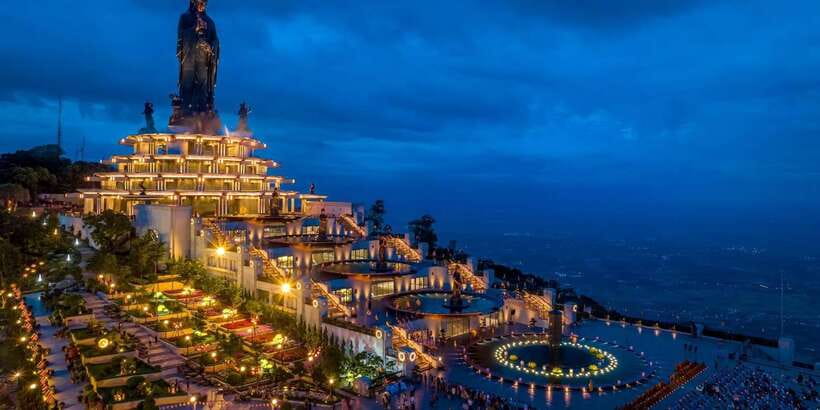
As the cable car glides effortlessly up the slopes of Ba Den Mountain, passengers can’t help but be captivated by the sweeping panoramic views that unfold before them.
The journey provides a bird’s-eye perspective of the lush, verdant landscape, punctuated by meandering rivers and rolling hills.
Reaching the summit, visitors are rewarded with a stunning vista featuring the towering bronze Buddha statue, the tallest of its kind in Asia.
This breathtaking experience offers a peaceful respite from the bustling city below, allowing travelers to fully enjoy the serene beauty of Vietnam’s natural wonders.
- Cu Chi Tunnels Small Group Tour – Morning Trip With English Guide
- Fun & Easy Vietnamese Coffee Workshop in Ho Chi Minh City
- Private Insight Mekong Delta (Day Trip)
- Morning Saigon Unseen Adventure Scooter With Ao Dai Riders Option
- Cu Chi Tunnels VIP Tour From Ho Chi Minh City
- Immersive Cooking Class & Wet Market Tour – Chef Led W/ Private Cook Stations
Symbolic Left Eye of God
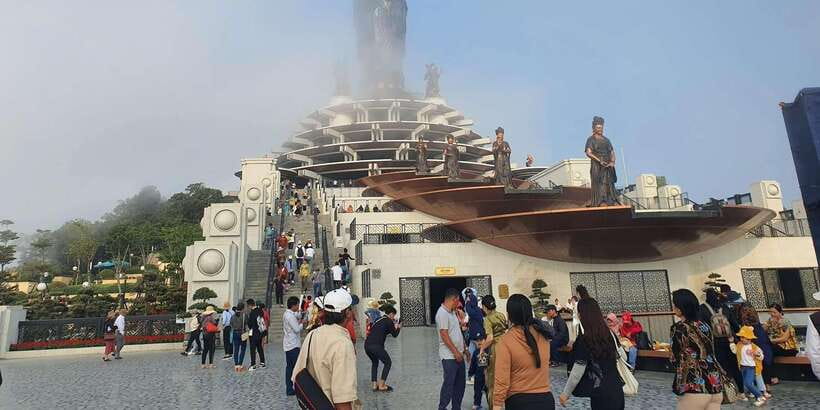
The symbolic Left Eye of God holds great significance within the Caodaist faith. This eye represents the supreme being and the divine nature of the Cao Dai religion. It’s a prominent feature in the temple’s architecture and interior design, serving as a constant reminder of the faith’s core beliefs.
-
The Left Eye of God symbolizes the all-seeing, all-knowing divine power that guides the Caodaist followers.
-
It represents the unification of the three major religions – Buddhism, Taoism, and Confucianism – into a single, harmonious faith.
-
The eye is believed to possess supernatural powers, offering protection and guidance to the Caodaist community.
Wartime Living Conditions and Activities
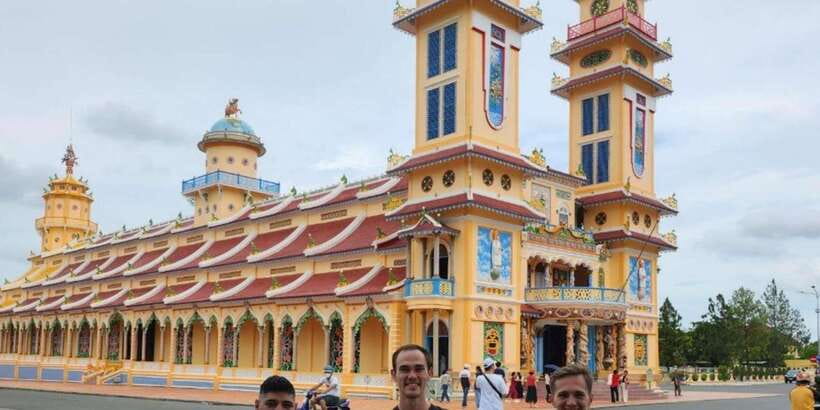
During the Vietnam War, the Cu Chi tunnels provided a vital lifeline for the Viet Cong forces, enabling them to launch attacks, transport supplies, and evade the enemy.
Visitors can explore the intricate network of tunnels and learn about the harsh realities of wartime living conditions.
Underground rooms, hidden entrances, and booby traps demonstrate the ingenuity and resourcefulness of the Viet Cong.
Tourists may even try their hand at traditional activities like shooting AK-47s, offering a glimpse into the daily struggles and tactics of the Vietnamese people during this tumultuous period in history.
Inclusions, Exclusions, and Reservations
Though the tour includes a range of amenities, there are also certain exclusions travelers should be aware of.
The tour package covers transportation, an English-speaking guide, entrance fees, lunch, and even a cable car ride to Ba Den Mountain.
However, it doesn’t include:
-
Tips for the guide and driver
-
Personal expenses such as gun shooting or telephone calls
-
Travel insurance
-
Any services not explicitly mentioned in the inclusions
Travelers can easily reserve their spot now and pay later.
Plus, free cancellation is available up to 24 hours in advance for a full refund.
Frequently Asked Questions
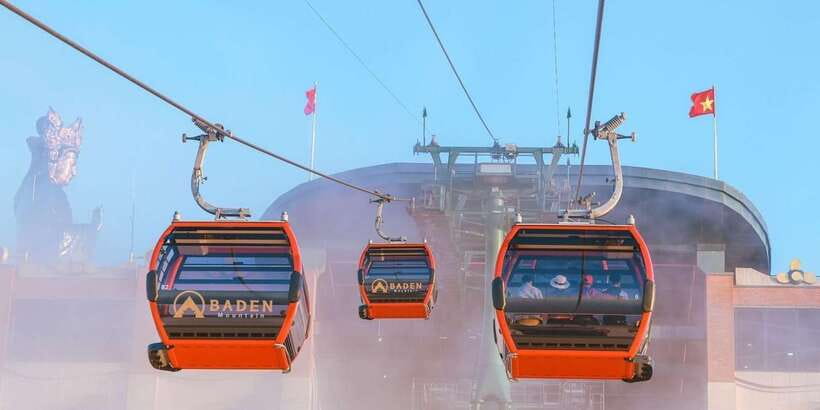
How Accessible Are the Tunnels for Visitors With Mobility Issues?
The tunnels can be quite challenging for visitors with mobility issues. While some sections are accessible, there are narrow, low-ceilinged passages that may be difficult to navigate. Visitors should consult the tour operator for guidance on accessibility.
Can I Take Photographs During the Caodaist Ceremony?
Visitors can generally take photographs during the Caodaist ceremony, but they should be respectful and avoid disrupting the ceremony. It’s best to ask the tour guide for guidance on appropriate photography etiquette.
What Is the Dress Code Recommended for Visiting the Temple?
The recommended dress code for visiting the Cao Dai Temple is modest attire. Visitors should avoid wearing revealing or overly casual clothing. Respecting the temple’s religious nature is important when participating in the ceremony.
Are There Any Age Restrictions or Safety Concerns for the Cable Car Ride?
There are no age restrictions for the cable car ride, but children must be accompanied by an adult. Safety precautions are in place, and the cable cars are designed to operate safely even in windy conditions.
Can I Purchase Souvenirs or Handicrafts at the Tour Sites?
Yes, visitors can purchase souvenirs and handicrafts at the tour sites. The Cu Chi Tunnels and Cao Dai Temple offer a variety of local crafts, souvenirs, and trinkets for visitors to browse and purchase as mementos of their experience.
The Sum Up
This full-day adventure from Ho Chi Minh City offers a captivating blend of Vietnam’s history, culture, and natural beauty. Visitors can explore the Cu Chi Tunnels, witness the vibrant Caodaist ceremony, and enjoy panoramic views from Ba Den Mountain. With transportation, an English-speaking guide, and a traditional Vietnamese lunch included, it’s an immersive and well-rounded experience that allows travelers to discover the diverse wonders of this region.
You can check availability for your dates here:More Tour Reviews in Ho Chi Minh City
- Mekong Delta Full Day – My Tho & Ben Tre – Four Islands Tour
- Cu Chi Tunnels, Cao Dai Temple, Ba Den Mountain Full Day
- Ho Chi Minh City: Mekong Delta Day Trip With Lunch & Drinks
- Saigon at Sunset: Ultimate Street Food Experience
- Ho Chi Minh City: Top Sightseeing Saigon Trip & History Tour
- Private Cooking Class Tour With Female Guide In Ho Chi Minh
Not for you? Here's more nearby things to do in Ho Chi Minh City we have reviewed
- Mekong Delta Full Day – My Tho & Ben Tre – Four Islands Tour
- Cu Chi Tunnels, Cao Dai Temple, Ba Den Mountain Full Day
- Ho Chi Minh City: Mekong Delta Day Trip With Lunch & Drinks
- Saigon at Sunset: Ultimate Street Food Experience
- Ho Chi Minh City: Top Sightseeing Saigon Trip & History Tour
- Private Cooking Class Tour With Female Guide In Ho Chi Minh
- Ho Chi Minh City Sightseeing Full-Day Tour With Great Guide
- Essential Mekong Delta: Highlight Tour From Ho Chi Minh City
- Cu Chi Tunnels, Cao Dai Temple, Ba Den Mountain Full Day
- Fastrack at Cam Ranh ( CXR) International Airport (Option)
- Vietnamese Craft Liquor Tasting Led by Food & Drink Writer
- HCM: 2-Day Mekong Floating Market With Cooking & Bike Ride
